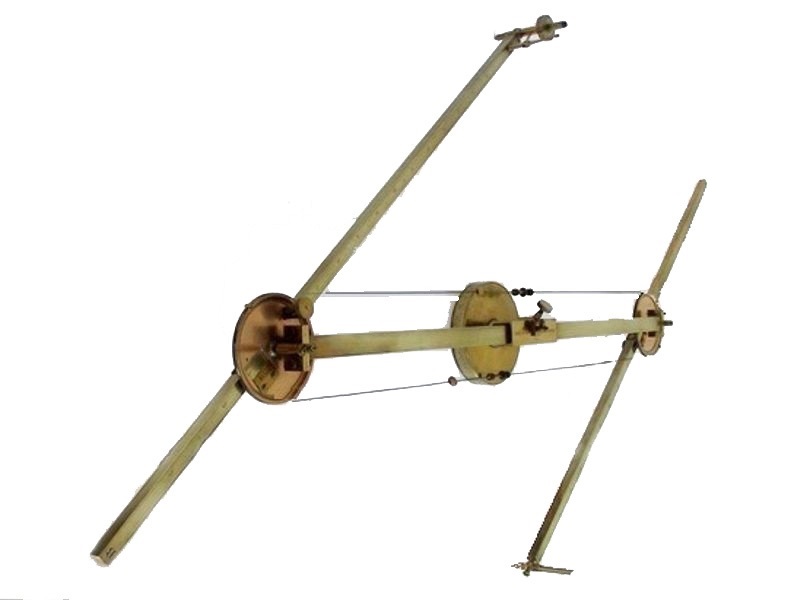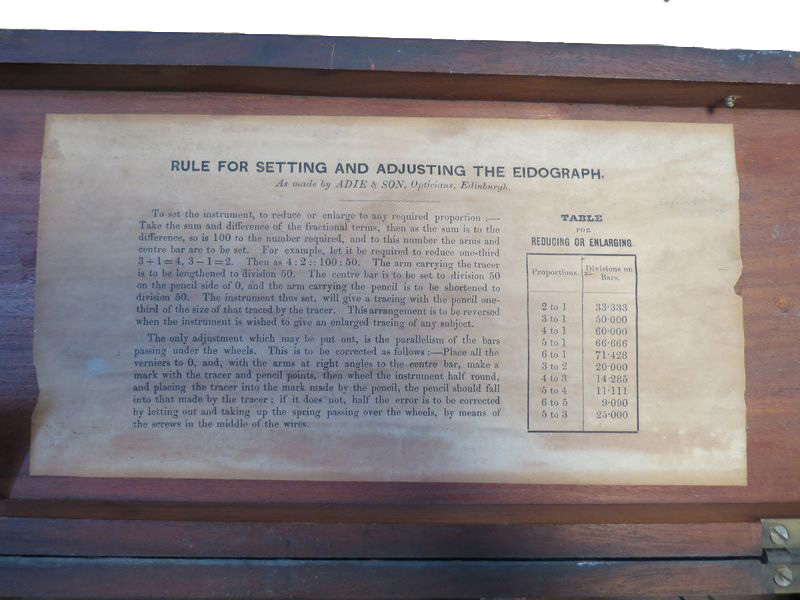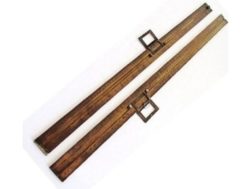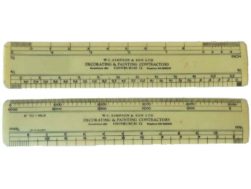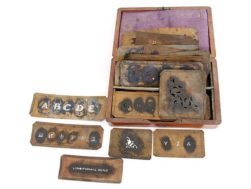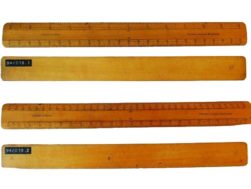Description
Eidograph in brass with a circular weighted base carrying a graduated square section brass spar in a sleeve engraved “ADIE & SON EDINBURGH” the spar terminating with two pulleys connected by a steel tape through which pass two further graduated spars carrying at their ends a steel point and pencil.
The ends of the main spar, the pulleys and the other two spars are distinguished by the letters “A” and “B”. The scales on all spars are divided into 80 parts to each side of their centres and the verniers on the sleeves within which they slide allow them to be set to 1/10 division. Spars A and B terminate in carriers for the steel point and the pencil and cord operated lever is used to lift the pencil off the drawing paper if required (cord missing). A brass covered lead weight can be set on the main spar. The eidograph was invented by Professor William Wallace of Edinburgh in 1821.
It was used for enlarging and reducing drawings. More accurate than the more common pantograph. It can be set to enlarge or reduce in any proportions. The pantograph can only work according to the divisions engraved on it.
This item was displayed prior to acquisition at the Institution of Municipal Engineers Centennial Exhibition, Brighton, June 1972. (Ref: DINNIS F.R.. A Catologue of the Exhibit Early Uses of Concrete in Edinburgh Roads which includes a selection of Surveying Instruments and an Ediograph in use c. 1872. The Institution of Municipal Engineers, 1972). A copy of this reference is held by the museum.
This ediograph was also exhibited at the “Exhibition of Civil Engineering Works”, Glasgow, 21 September – 23 October 1977.
There was an especially active period of invention in Scotland in the 1820s when heated controversy surrounded instruments such as Andrew Smith’s apograph and his “new” pantograph, as well as John Dunn’s pantograph. The most successful and long-lived of these new designs was the eidograph devised by the Edinburgh professor of mathematics William Wallace in 1821. Like the pantograph, the eidograph incorporated tracing, drawing, and fixed points, all three of which remained in a single line during operation. However Wallace’s arrangement of these components was novel. The fixed weight was placed centrally and supported a graduated bar at each end of which was a pivoted, adjustable rod, one bearing the tracer and the other the drawing point. A fine chain (later a steel band) was used to link the two rods and ensure that they moved in parallel. Wallace was able to dispense with the pantograph’s castors because his instrument was balanced around the central weight. At the time Wallace was working on the eidograph, Edinburgh was a center for publishing and engraving, and among its characteristic products were multivolume encyclopedias. These were expected to be heavily illustrated with engraved plates whose images would usually be copied from existing publications. Al-though it was never developed commercially, Wallace devised a special form of eidograph to produce reversed images that were engraved directly onto copper plates for printing. The simpler form of eidograph was manufactured by the London maker Robert Bate and then, in a reengineered version, by Alexander Adie. It was further improved by W.F. Stanley in the second half of the nineteenth century and, in parallel with the pantograph, continued to figure in instrument makers’ catalogs into the twentieth century.
(Ref: Bud J. & Warner D.J. (Ed). Instruments of Science – An Historical Encyclopedia. The Science Museum, London and The National Museum of American History, 1998.)

